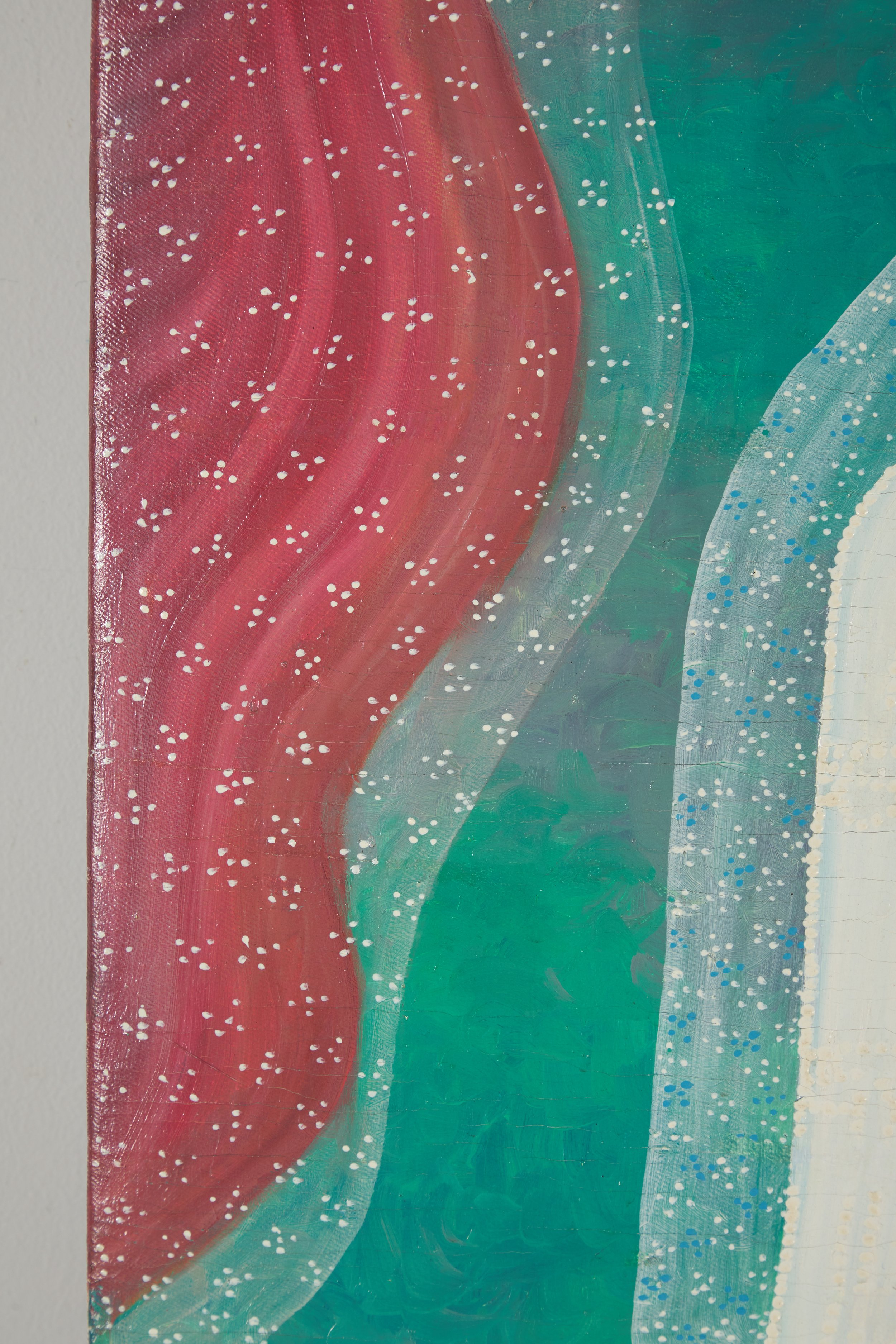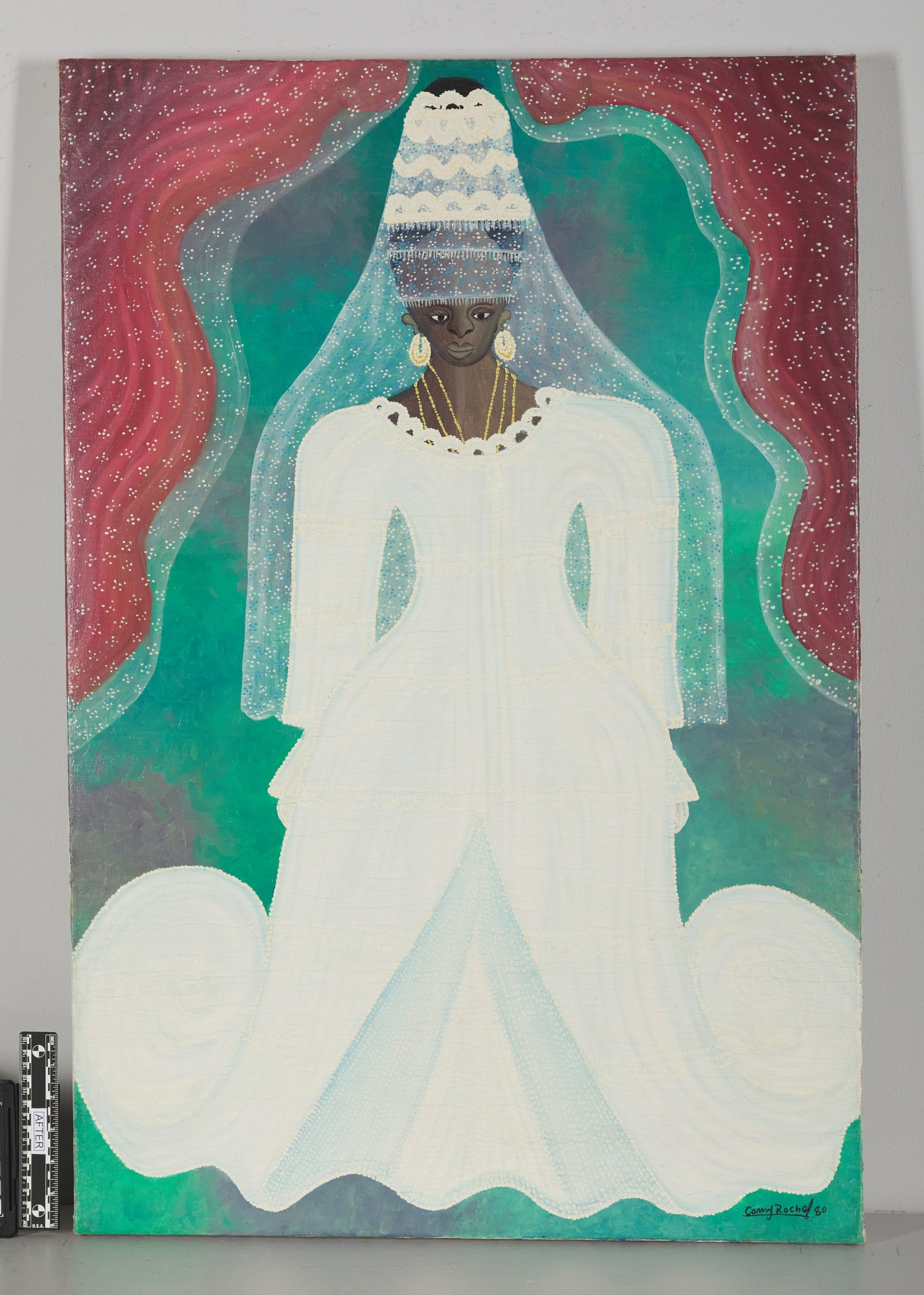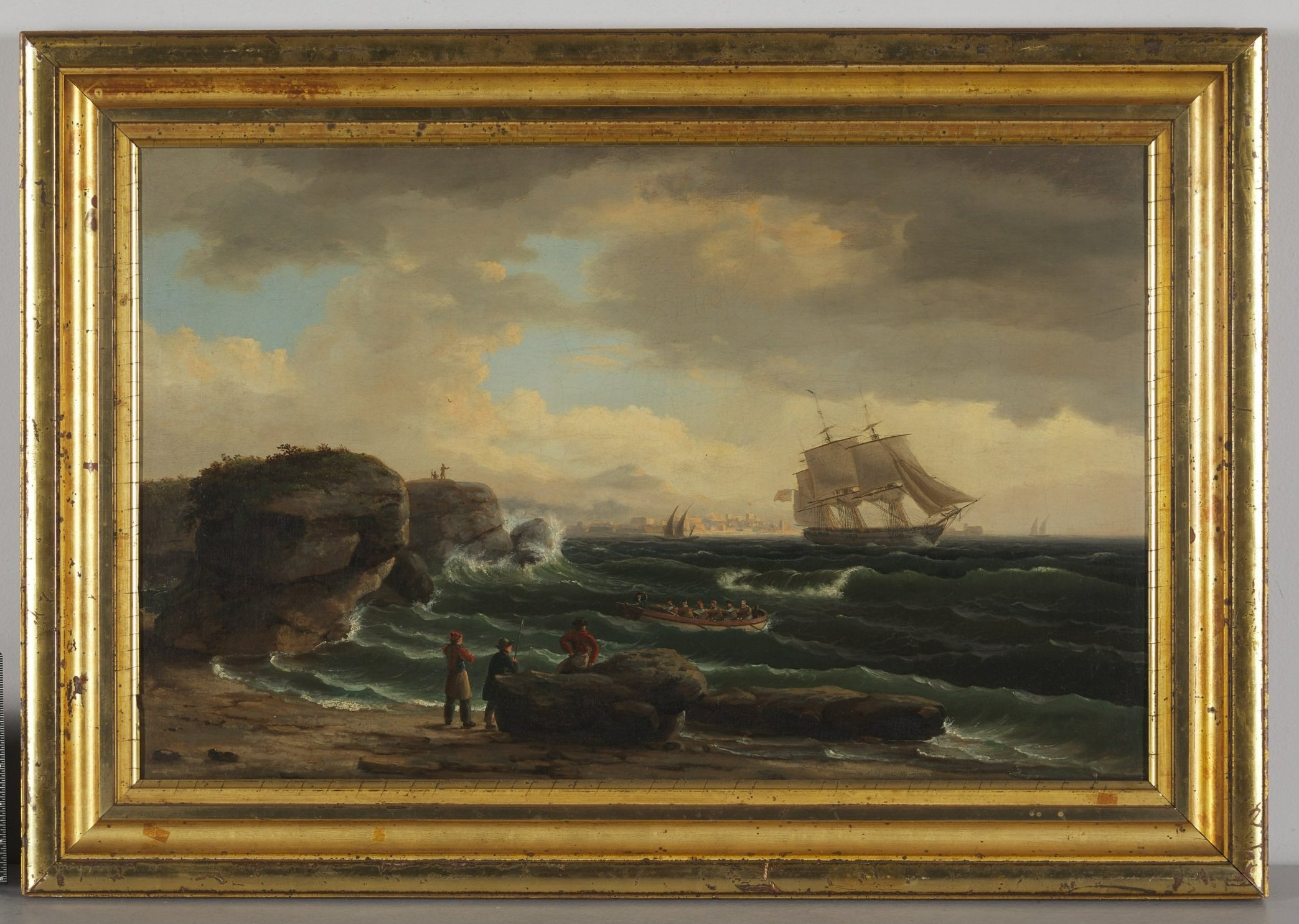Camy Rocher, a talented Haitian artist whose life ended far too soon, left behind a legacy that continues to captivate art enthusiasts. Born in 1959 and tragically passing away at the tender age of 21 in 1980, Rocher's artistic journey was cut short, but his impact on the art world remains deep. Rocher's painting Erzulie stands as a testament to his talent and vision.
Erzulie before treatment
Measuring 36 inches in height and 24 inches in width, this oil on canvas portrays the enchanting figure of Erzulie, a beloved figure in Haitian Vodou mythology. Erzulie, often associated with love, beauty, and femininity, is portrayed with grace and elegance in Rocher's painting. However, when the painting arrived at The Conservation Center, it bore the imperfections of time and neglect.
Erzulie before treatment, detail
Upon arrival at The Conservation Center, Erzulie was in a state of distress. The painting exhibited numerous issues including sharp, raised cracking, paint losses, and notable deformations to the canvas. Despite these issues, the inherent beauty of Rocher's creation shone through, awaiting conservation. Under the expert guidance of Michael Young, Senior Paintings Conservator at The Conservation Center, a treatment plan was developed to breathe new life into Erzulie. The process started with thorough photographic documentation, ensuring a comprehensive record of the painting's condition before and after treatment.
Erzulie before treatment under raking light
The treatment began by consolidating the numerous areas of flaking paint using a reversible adhesive formulated for conservation. Stabilizing the paint layer allowed for the careful removal of surface grime with an aqueous cleaning. The painting was then removed from its inadequate stretcher and flattened using humidification and suction techniques. To provide structural support to the original canvas, the painting was lined to a prepared secondary canvas using conservation-grade adhesive. The painting was then restretched to a new auxiliary support and keyed out to ensure optimal tension.
Erzulie before treatment detail
Erzulie before treatment detail
Erzulie before treatment detail
Losses were filled and textured using conservation-grade fill material before a coat of varnish was applied to saturate the paint layer. Reversible conservation paints were used for inpainting to integrate areas of loss and abrasion seamlessly. A coat of UVS matte varnish added a final touch, enhancing the painting's surface while protecting it from harmful UV rays. An archival backing board was attached to the reverse for additional protection, preparing Erzulie to go back on display in the owner's home.
Erzulie after treatment, under UV light
Erzulie after treatment detail
Erzulie after treatment detail
The client's feedback echoed the sentiment of many admirers of Camy Rocher's work. Describing the transformation as "miraculous," they expressed gratitude for conserving this important piece of Haitian art history. "Your team’s work is outstanding. I spent the weekend gawking at the restored piece that is now magnificent and will remain a powerful contribution to the legacy of Camy Rocher for years to come."
Erzulie after treatment
Erzulie after treatment verso
Erzulie after treatment, detail of signature











































